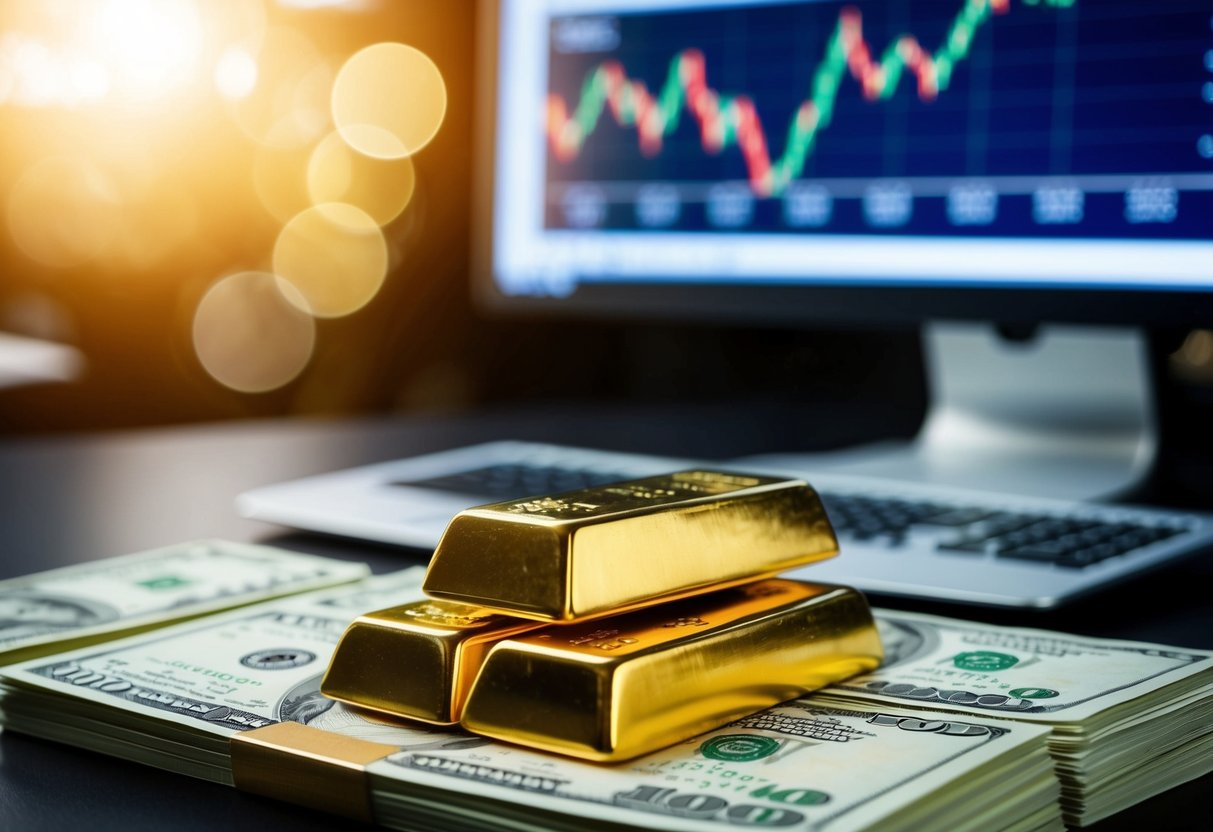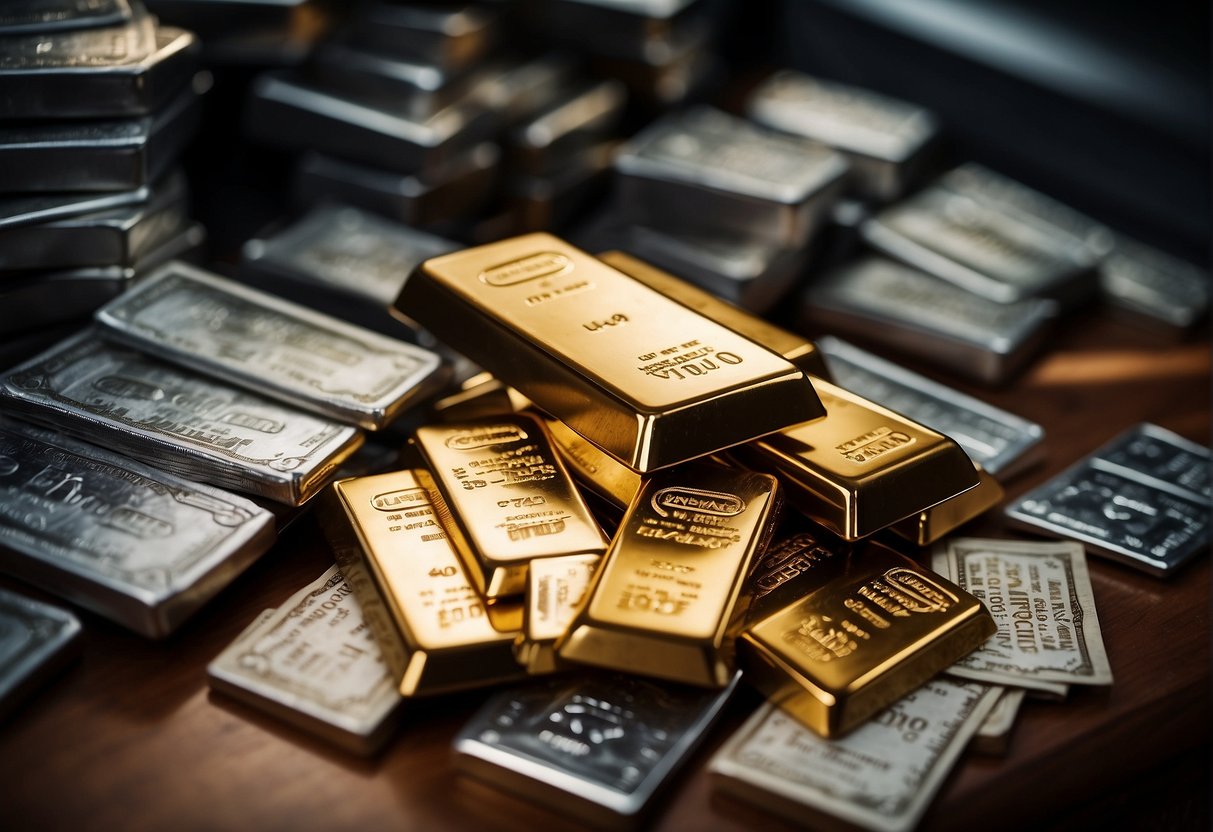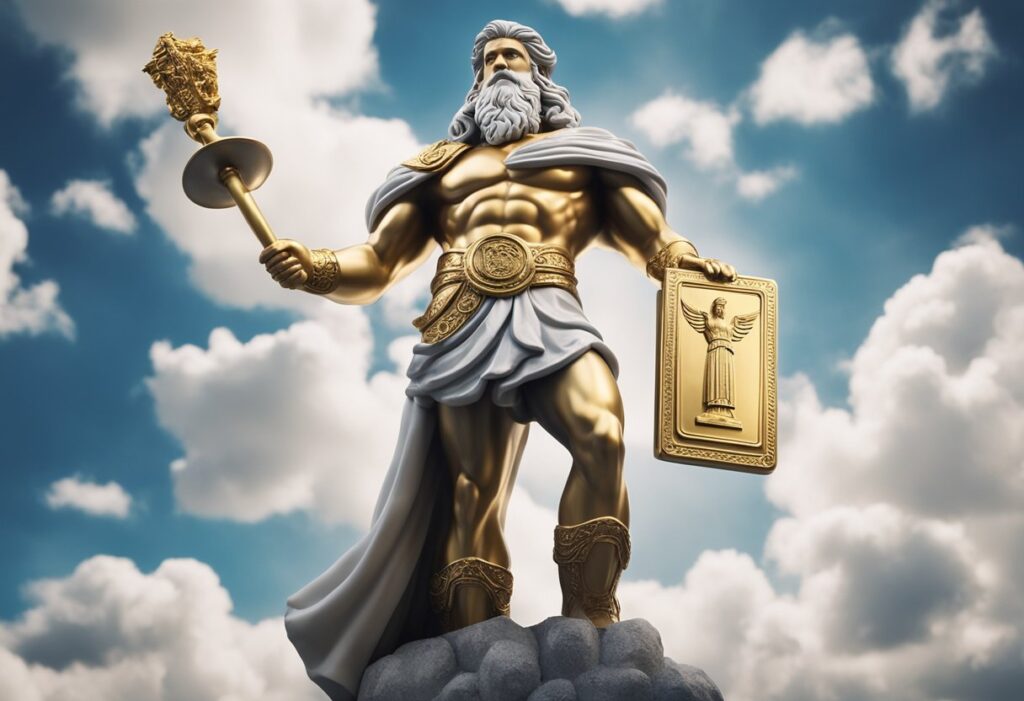Many people today handle three types of money without realizing their differences. The first type, often referred to as “God’s money,” consists of precious metals like gold and silver—tangible, immutable elements that have been valued since the earth’s creation. The second type is government-issued currency, known as fiat money, such as dollars, euros, and yen. Unlike gold and silver, fiat money is not backed by physical commodities and can be produced in unlimited quantities by central banks.
The third type comprises fake assets, including certain financial products that don’t hold real value, much like the fiat currency they relate to. Central banks worldwide print vast amounts of this money, supporting their operations at the expense of the public. This unchecked creation of fake money has led to significant financial instability, making tangible assets like gold and silver even more valuable. We must emphasize the critical need for younger generations to recognize this financial disparity and consider investing in tangible assets to secure their financial future.
Request our FREE Strategies for Thriving During an Economic Collapse PDF.
Key Takeaways
- There are three types of money: gold/silver, fiat currency, and fake assets.
- Central banks create fiat money, leading to financial instability.
- Tangible assets like gold and silver are essential for long-term financial security.
Three Types of Currency

Divine Wealth: Gold and Silver
Gold and silver are often referred to as “God’s money.” These precious metals have been valued since the beginning of time. Their worth does not fluctuate like modern currency because they cannot be artificially created or manipulated. For example, gold has been around since the Earth’s creation and will remain valuable long after everything else has changed. Physical gold and silver, unlike paper assets, hold intrinsic value.
Official Currency: Fiat Money
Fiat currency is the money issued by governments. Examples include the dollar, the yen, the peso, the euro, and the yuan. Unlike gold and silver, fiat money has no intrinsic value; its worth is determined by the government that issues it. The central banks can print more of it, which often leads to inflation. The purpose of central banks, such as the Federal Reserve, is mainly to protect banks, not the public. This can create a system that many believe to be corrupt, leading to financial instability.
Artificial Assets
Artificial assets are investments that do not have real, tangible value. Examples include certain types of ETFs and stocks that are not backed by actual assets. Similar to eating fake food or drinking fake water, relying on these can lead to financial trouble. Those who invest in artificial assets may find that they do not hold value over time. It is suggested to invest in tangible assets like gold and silver to safeguard wealth.
The Deception of ETFs and Physical Value

God’s Money vs. Government Money
Gold and silver are often referred to as “God’s money” due to their intrinsic value and historical presence. These precious metals have existed since the earth was formed and will continue to be around long after paper currencies disappear. Unlike fiat currencies, such as the dollar, yen, or euro—produced and controlled by governments—gold and silver cannot be faked or endlessly printed.
Physical Precious Metals
Gold and silver can be held physically, offering a sense of security that paper money and digital assets cannot provide. For example, 500 American Silver Eagle Coins, also known as a monster box, represent real, tangible value. While the price of silver has increased from $1.40 to $30 per ounce over time, gold is even more valuable per ounce, making it a reliable store of wealth.
The Problem with ETFs
Exchange Traded Funds (ETFs) for gold and silver represent physical metals but do not provide the same security. These financial products can be manipulated and do not offer the tangible reassurance of holding physical gold or silver. ETFs can be considered as fake as the fiat currencies they are traded against, deceiving investors about their true worth.
Implications for the Future
Central banks, such as the Federal Reserve, Bank of Japan, and European Central Bank, continue to print fiat money, which devalues these currencies over time. In contrast, gold and silver retain their value, making them smarter choices for safeguarding wealth. The shift to gold mining investments by prominent figures like Warren Buffett signals a changing economic landscape. Trust in physical assets over paper promises is growing, highlighting the need for financial education on the true nature of money and value.
Summary of Key Points:
- Gold and silver are timeless stores of value.
- Physical metals provide tangible security.
- ETFs can mislead investors regarding true value.
- Continual printing of fiat money devalues currencies.
- Prominent investors are shifting towards gold mining.
The 1971 Shift from Gold-Backed Dollars
In 1971, President Nixon made a significant decision by removing the dollar from the gold standard. This action had far-reaching consequences, and it led to the creation of what many call “fake money.” Before this shift, each dollar was backed by a specific amount of gold, which provided tangible value. When the dollar was no longer tied to gold, it allowed for the unlimited printing of paper money, which many argue has led to financial instability.
This change marked the beginning of a new financial era. People started to rely on fiat currency, which is money that a government has declared to be legal tender, but it is not backed by a physical commodity. This divergence from gold-backed money has created a landscape where currencies can be manipulated, leading to financial crises.
Insights into the Financial Crisis

How Money is Created Through Credit, Borrowing, and Taxes
There are three primary forms of money: natural resources like gold and silver, government-issued currency, and non-tangible assets. Gold and silver are referred to as “real money” because they have inherent value and can’t be replicated. Government money, like dollars, pounds, or euros, holds value because governments declare it so, but it’s considered less reliable because it can be produced in unlimited amounts. Borrowing and credit play key roles in creating money as well. When people take out loans, new money is essentially created. Taxes also form part of this system because they fund government operations and services.
Continuation of Financial Turmoil Since 1971
The financial crisis that began in the early 1970s continues to impact the economy today. Major changes occurred when the dollar was detached from the gold standard in 1971, allowing the unlimited printing of money. This shift has led to massive financial instability over the years, as evidenced by various economic recessions and market crashes. The current economic challenges are still rooted in decisions made decades ago.
Signs the Dollar is Losing Value
Several indicators suggest that the U.S. dollar is losing its strength. The value of gold has risen significantly, signaling a lack of faith in paper currency. The stock market remains high, boosted by large amounts of newly printed money, which isn’t sustainable long-term. Additionally, noteworthy figures have started investing heavily in gold instead of traditional stocks, highlighting a shift in financial strategies due to the weakening dollar. These changes point toward a concerning economic future if trends continue.
The Financial Landscape Today

Stock Market Trends, Inflation, and the Value of Precious Metals
In recent times, the stock market has seen unusual highs. The increasing prices are mainly driven by the excessive printing of money by central banks. This monetary policy was intended to maintain market stability and support pensions and 401(k) plans. Meanwhile, the value of gold and silver has also been rising. This increase is being attributed to the same excessive money printing, which has led to significant inflation. Gold and silver are seen as safer, more stable investments compared to conventional stocks, especially during economic uncertainty.
Warren Buffett’s Recent Shift in Investments
Recently, notable investor Warren Buffett made a surprising shift in his investment strategy. Historically, Buffett has been critical of gold investments. However, he has now moved away from traditional investments like bank and airline stocks, choosing instead to invest in gold mining companies like Barrick Gold. This change suggests a significant shift in the fundamental outlook on the economy and the financial markets.
Buffett’s actions have raised questions about the future direction of the market. His move indicates a lack of confidence in the stability of traditional financial institutions and suggests anticipation of greater economic instability. For many, Buffett’s pivot toward gold signifies a proactive approach to safeguarding wealth against potential economic downturns.
The Shift Towards Centralized Control: Capitalism, Socialism, and Communism

Gold and silver are described as enduring and unforgeable, present since the earth was created and likely to remain valuable even after fiat currencies collapse. For instance, in 1972, silver was only $1.40 but has risen to $30 today. We must emphasize gold’s longevity and reliability, highlighting gold’s continuous value since Nixon took the dollar off the gold standard in 1971.
Key Points:
- Central Banks and Fiat Currency: Central banks, such as the Federal Reserve, are criticized for producing fiat money. Their primary function is seen as protecting banks rather than individuals.
- Recent Trends: Highlighting actions by influential figures like Warren Buffett, who recently moved investments from banks and airlines to gold mining, suggesting a significant shift and growing uncertainty in traditional economic structures.
Observations:
- Economic Manipulation: The speaker believes central banks are artificially inflating the stock market by printing money, which leads to misleading stability.
- Future Projections: The U.S. dollar is projected to weaken further, with gold, silver, and potentially cryptocurrencies like Bitcoin seen as better alternatives.
- Centralization and Control: The transition from capitalism towards more centrally controlled economies, akin to socialism or communism, is noted. This central control could lead to international interventions similar to those seen with Greece and Brazil through the IMF, which is viewed negatively.
Investment Advice:
- Gold and silver, referred to as “God’s money.”
- Bitcoin, called “people’s money.”
- Avoid fiat currencies and traditional government-backed financial instruments.
The overall perspective stresses financial education and being wary of increasingly centralized economic control.
The Role of the IMF and SDRs in the Financial Future

The International Monetary Fund (IMF) plays a significant role when countries face economic difficulties. It acts as a financial support system by providing temporary financial assistance. In moments of severe financial distress, nations often turn to the IMF for help. This assistance isn’t just limited to loans; one important tool the IMF uses is Special Drawing Rights (SDRs).
SDRs are international reserve assets created by the IMF. They help stabilize economies by supplementing the member countries’ official reserves. Essentially, SDRs can be exchanged among governments for freely usable currencies in times of need. This means that countries can use SDRs to obtain liquidity during economic crises.
Key Points about SDRs:
- Created by the IMF: SDRs are not a form of currency. Instead, they are potential claims on the currencies of IMF members.
- Value: The value of an SDR is based on a basket of major international currencies (U.S. dollar, euro, Chinese yuan, Japanese yen, and British pound).
- Purpose: They provide additional liquidity to the global economy by supplementing IMF member countries’ foreign exchange reserves.
When nations like Greece or Brazil faced economic collapse, the IMF stepped in with financial packages, including SDRs, to stabilize their economies. The possibility of the IMF stepping in to “save” America with SDRs suggests a future where reliance on these international reserves could become more common.
In conclusion, the IMF and SDRs are crucial tools in global economic stability. By understanding their role, one can grasp the potential paths for future financial security.
Final Recommendations

Investing in Tangible Assets and Cryptocurrencies
Gold and silver are described as tangible assets that have been valuable throughout history. They are referred to as “God’s money” because they cannot be faked, unlike fiat currencies. Gold and silver are viewed as strong investments because they maintain value even when government currencies lose value. Notably, the price of silver has increased significantly over time, making it a potentially profitable investment. Additionally, cryptocurrencies like Bitcoin are considered reliable alternatives to traditional money due to their decentralized nature.
The Effects on the USA and the Global Economy
Note that central banks, like the Federal Reserve, create and distribute fiat money, which is considered fake money. This has led to financial instability and a weak economy. The financial crisis is seen as more severe than the current health crisis, as it has roots going back to the 1970s when the dollar was decoupled from the gold standard. This systemic issue has long-term effects, potentially leading to the downfall of the US dollar. Furthermore, the shift by influential investors like Warren Buffett towards gold mining stocks indicates a significant change in the financial landscape. This suggests that people should prepare for major economic shifts by focusing on more stable investments like gold, silver, and cryptocurrencies.








